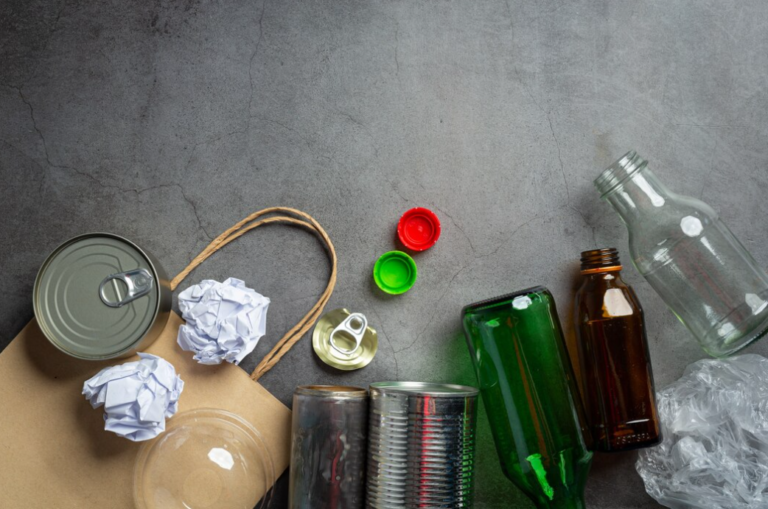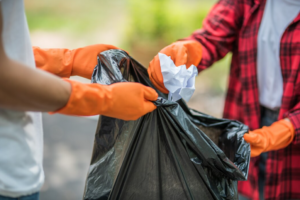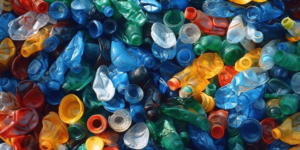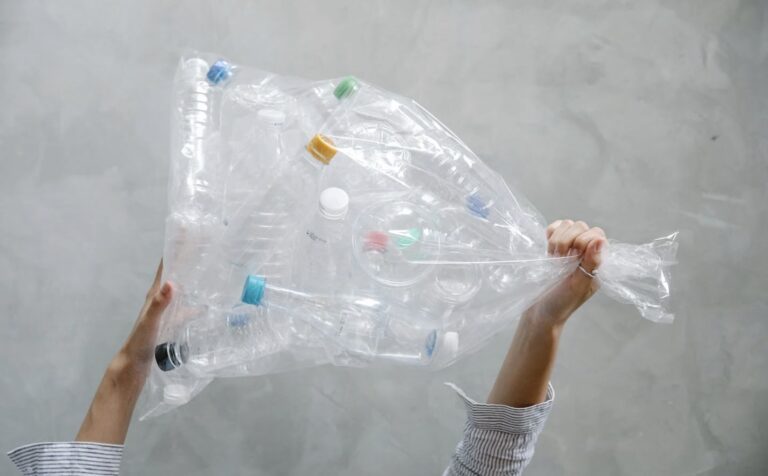Plastics, at that juncture, represented more than mere materials. They symbolized the dawn of a new age – an age of boundless possibility, innovation, and modernity. The shift from traditional materials to plastics was revolutionary, bringing about a seismic shift in industries, from automotive and aerospace to household goods and healthcare. As people marveled at this newfound marvel, plastics promised a utopian future of convenience and affordability.
The sentiment encapsulated by Walter’s single word was not just prophetic but also emblematic of the times. For the post-war generation, plastics became synonymous with progress and prosperity. This wave of enthusiasm wasn’t limited to industry professionals or entrepreneurs. The general public, too, embraced this shift with open arms. Families began to rely on plastic goods, from Tupperware parties becoming a suburban staple to children playing with plastic toys. As such, Walter’s proclamation in “The Graduate” was not merely a career advice to a perplexed young man but a reflection of society’s collective optimism and belief in the promise of plastics. This optimism, however, was not without its shadows, as the world would soon discover.
The Significance of Plastics in the ’60s
Back in the 1960s, plastics represented innovation and change. Nowadays, plastic is a staple in everyday life, shaping both luxurious items and commonplace objects. Notably, among the revolutionary inventions of the era, plastic trash bags stand out.
These bags, originally developed for hospitals to isolate potentially dangerous, germ-ridden waste, played a pivotal role in disease prevention. Given the prominence of the “Germ Theory” linking germs to diseases, these plastic innovations, especially prior to the Polio vaccine’s advent, were crucial.
The Controversy Surrounding Plastic Trash Bags
It’s crucial to understand the dichotomy that exists regarding plastics. On one hand, they have undeniably brought tremendous convenience and hygiene improvements to society. On the other, their prolonged longevity and impact on the environment, especially in terms of waste management, have become subjects of intense debate. For many environmentalists, the issue isn’t just with the plastic trash bags themselves, but with the larger implications of a disposable culture that they represent. Plastic trash bags, particularly the non-biodegradable ones, can take hundreds of years to decompose, leading to a staggering accumulation of waste in landfills. This accumulation can result in soil and water contamination, harming aquatic life and disrupting ecosystems. Moreover, the production of plastics contributes to carbon emissions, aggravating global warming.
Environmentalists, in their criticism, aim to draw attention to this broader picture. While acknowledging the undeniable benefits plastics brought in the past, they urge society to consider the long-term ecological costs. Their criticisms serve as a call to action for industries to innovate and for consumers to make informed choices.
The introduction of eco-friendly options like compostable and recycled plastic bags is indeed a step in the right direction. But, as with all solutions, their effectiveness lies in their widespread adoption and proper disposal. The challenge remains to balance the conveniences of today with the preservation of our environment for tomorrow.
Origin of the Plastic Trash Bag
Attributed to Canadian inventor Harry Wasylyk and his associate Larry Hansen, the first plastic trash bag prototype was crafted in the 1950s in Wasylyk’s residence. Their initial clientele was the Winnipeg General Hospital. Soon after, Union Carbide recognized the innovation’s potential, acquiring Wasylyk & Hansen’s design. By the late ’60s, under the brand “Glad Garbage bags,” these bags graced households globally.
Early iterations weren’t environmentally conscious. However, in 1971, Toronto chemist James Guillet formulated a sunlight-degradable plastic. Contrasting this, early American waste disposal practices were primitive. Streets overflowed with trash, attracting pests and contaminating drinking water sources. In a surprising twist, even vultures were protected in West Virginia due to their garbage-clearing capabilities. Infestations plagued significant buildings, including the White House, while New York’s garbage disposal into the East River turned catastrophic. However, individuals recalling the pre-plastic era paint a grim picture. Pungent odors emanated from metal bins, and without plastic bags, disposal was a messy affair.
The Creation of Plastic Trash Bags
The invention of low-density polyethylene marked a watershed moment in material science. Suddenly, humanity had at its disposal a versatile, durable, and moldable material that could be used for a myriad of applications. The humble plastic bag is perhaps the most ubiquitous of these applications. Its creation, while seemingly simple, is a result of intricate processes. These beads, when subjected to precise temperatures and pressures, transform into the bags we use daily. This metamorphosis from tiny resin beads to handy, lightweight containers is not just a technological marvel but also a testament to human ingenuity. While they offer undeniable convenience, the journey of the plastic bag also reflects our evolving relationship with materials, from sheer awe of discovery to the responsibility of sustainable usage. Every bag we hold has a story, one of innovation, evolution, and the continuous quest for balance between utility and sustainability.
A Plea to Environmentalists
To environmental champions: doesn’t the plastic trash bag’s advent signify a decline in grave diseases and infestations? Biodegradable alternatives are emerging, eliminating many concerns.
The visual of vultures and unsightly trash heaps belongs in the past. The introduction of plastic trash bags transformed urban landscapes. It’s crucial to recognize and appreciate the balance they offer between convenience and safety. Asking those who’ve experienced the pre-plastic world will undoubtedly confirm the value of this ingenious invention.
Plastic: The Double-Edged Sword of Modernization
The evolution of plastics, from a symbol of progress to a subject of environmental concern, is a testament to how society’s perceptions change over time. While Walter’s advice was indicative of the era’s embrace of the material, today’s discussions around plastics highlight a more nuanced understanding. From being used in advanced medical equipment to simple household items, plastics have truly revolutionized the way we live. Yet, as we’ve grown more reliant on them, we’ve also seen the adverse environmental impacts they can bring, especially when not managed responsibly. The plastic trash bag, while emblematic of hygiene and convenience, also stands as a poignant reminder of the challenges of waste management and environmental sustainability. It underscores the perpetual human challenge: to harness the benefits of innovation while addressing its unintended consequences.
Unpacking the History
Diving deep into the 1960s, plastics were not just materials; they were the symbols of modernity. Everything from cars, toys, to essential household items began embracing this versatile material. Its flexibility, durability, and affordability were game-changing.
One cannot discuss the rise of plastics without highlighting the role of the plastic trash bag. Originating from a need to safely dispose of hazardous medical waste, it soon found its way into households, replacing metal bins and paper bags. The convenience it offered was unparalleled. Gone were the days of dealing with soggy paper or cumbersome metal bins. The plastic trash bag was the answer to urban waste management.
Navigating the Criticisms
However, as with all innovations, there were unforeseen consequences. The environmental footprint of plastic bags became evident. Non-biodegradable bags littered landscapes, clogged waterways, and harmed marine life. The once-celebrated invention now became the focal point of environmental criticism.
Yet, was it fair to demonize an invention without considering its historical context? Before plastic trash bags, urban areas grappled with waste management. Streets littered with trash were breeding grounds for diseases. The bubonic plague, cholera, and typhoid fever, which claimed millions of lives, were directly linked to unsanitary conditions. The invention of the plastic bag, especially in medical settings, was a beacon of hope in the fight against these epidemics.
The Pioneers Behind the Bag
Behind every invention lies a tale of ingenuity and persistence. The plastic trash bag is no exception. Harry Wasylyk and Larry Hansen, two Canadians, were the brains behind this revolutionary product. From a humble beginning in Wasylyk’s home to being acquired by industrial giant Union Carbide, their invention’s journey was nothing short of remarkable. However, it’s essential to remember that the initial trash bags were far from perfect. They served their primary purpose but at an environmental cost. It was James Guillet’s innovative sunlight-degradable plastic in the 1970s that began steering the industry towards sustainability.
Revisiting the Past
To truly appreciate the plastic trash bag’s significance, one must journey back in time. In early America, waste disposal practices were rudimentary, to say the least. Streets littered with garbage painted a grim picture. Open sewers, infested buildings, and waste-filled water bodies were the norm.
In such an environment, the introduction of the plastic trash bag was revolutionary. For the first time, garbage could be contained, reducing the spread of diseases. The plastic bag was a beacon of hope in an era that desperately needed solutions. However, over time, the repercussions became apparent. As cities grew and consumerism rose, so did the amount of waste. Landfills started overflowing with plastic, and oceans became graveyards for discarded bags. Marine life suffered as animals ingested plastic, mistaking it for food.
The Evolution and Future of Trash Bags
Despite its challenges, the plastic industry has been proactive in seeking solutions. The creation process of trash bags itself is fascinating. Starting with low-density polyethylene in the 1940s, the industry has constantly evolved. The entire process, from heating resin beads to molding and packaging, showcases human ingenuity.
With rising environmental concerns, the industry has been innovating. Biodegradable and compostable bags are slowly making their way into the market, presenting a more sustainable alternative. These bags, while still in their infancy, offer a glimmer of hope.
To wrap up
It’s easy to point fingers and lay blame. But it’s essential to approach the plastic dilemma with nuance and understanding. To the environmentalists and activists, the plastic trash bag, despite its flaws, has played a vital role in urban development and sanitation.
Biodegradable bags represent the industry’s commitment to a sustainable future. Instead of vilifying plastic, the focus should be on promoting responsible usage and disposal. After all, the problem isn’t plastic per se but our relationship with it. Furthermore, the plastic trash bag’s evolution teaches a vital lesson about innovation. It’s a continuous journey, fraught with challenges but driven by the human spirit. As we stand at the crossroads of sustainability and convenience, the plastic trash bag’s tale reminds us of the power of innovation and adaptability.
In conclusion, as we navigate the 21st century, balancing the conveniences of modern life with environmental responsibility is paramount. The story of the plastic trash bag serves as both a cautionary tale and a beacon of hope. As we forge ahead, it’s essential to remember and learn from our past, innovate in the present, and build a sustainable future.









+ There are no comments
Add yours